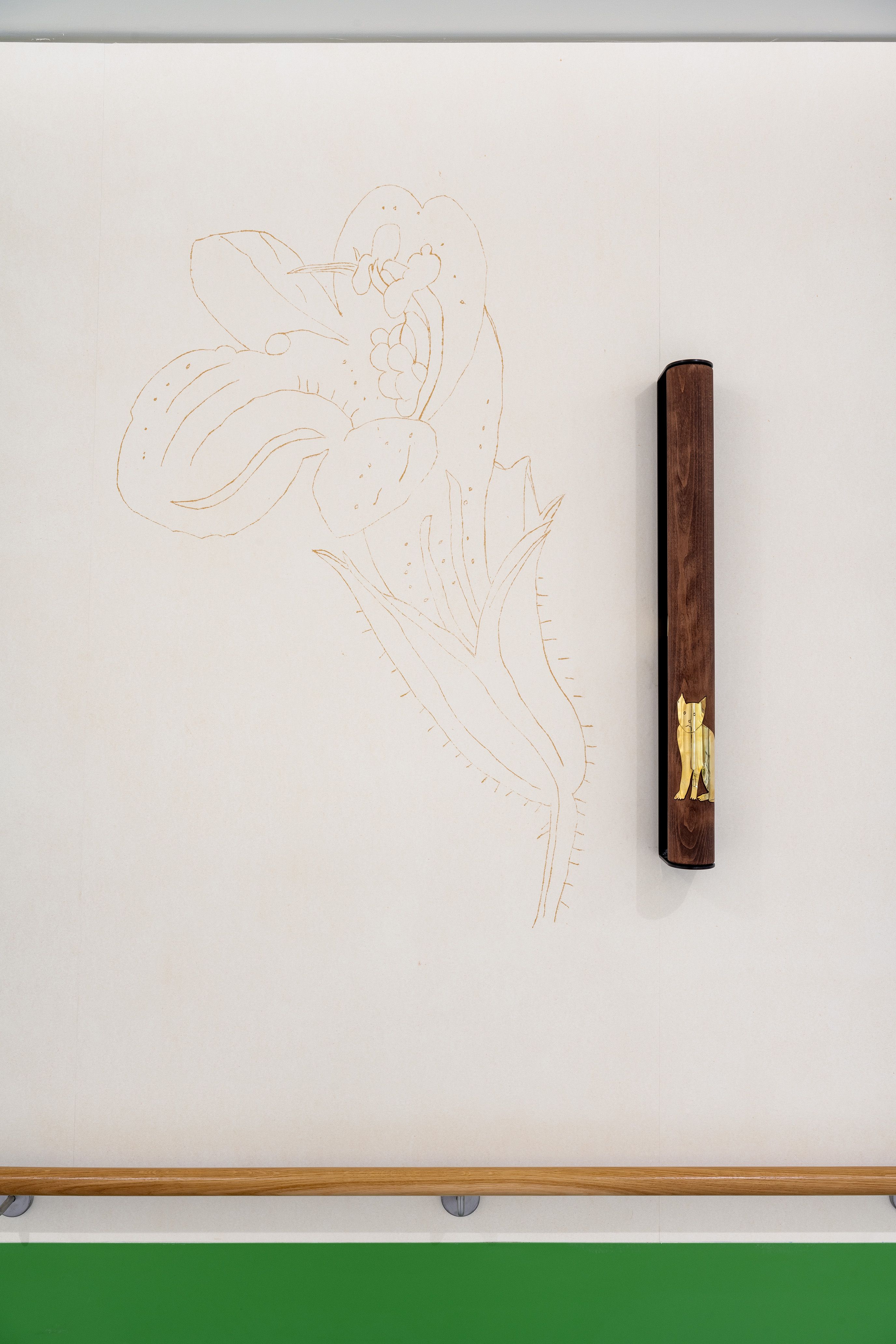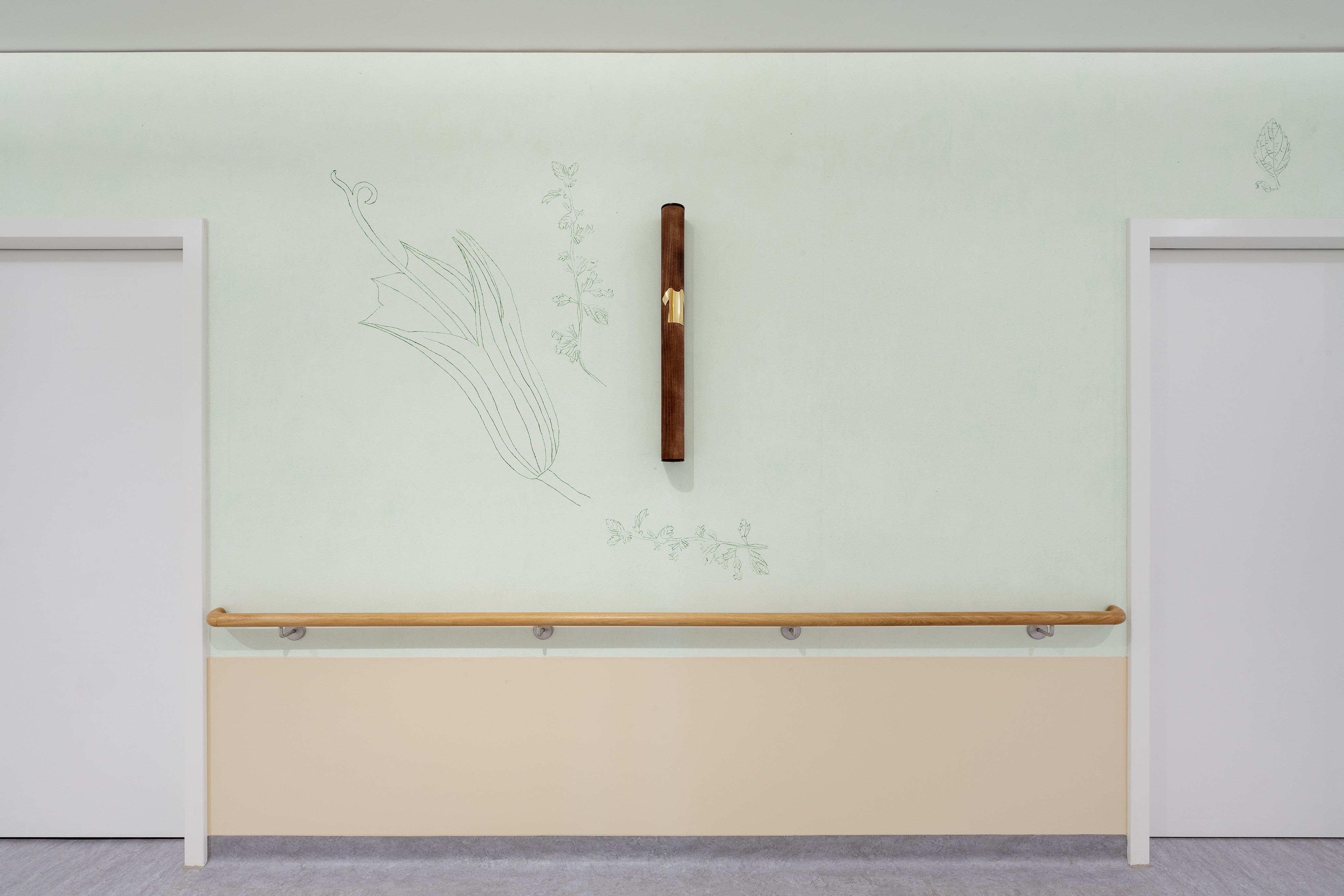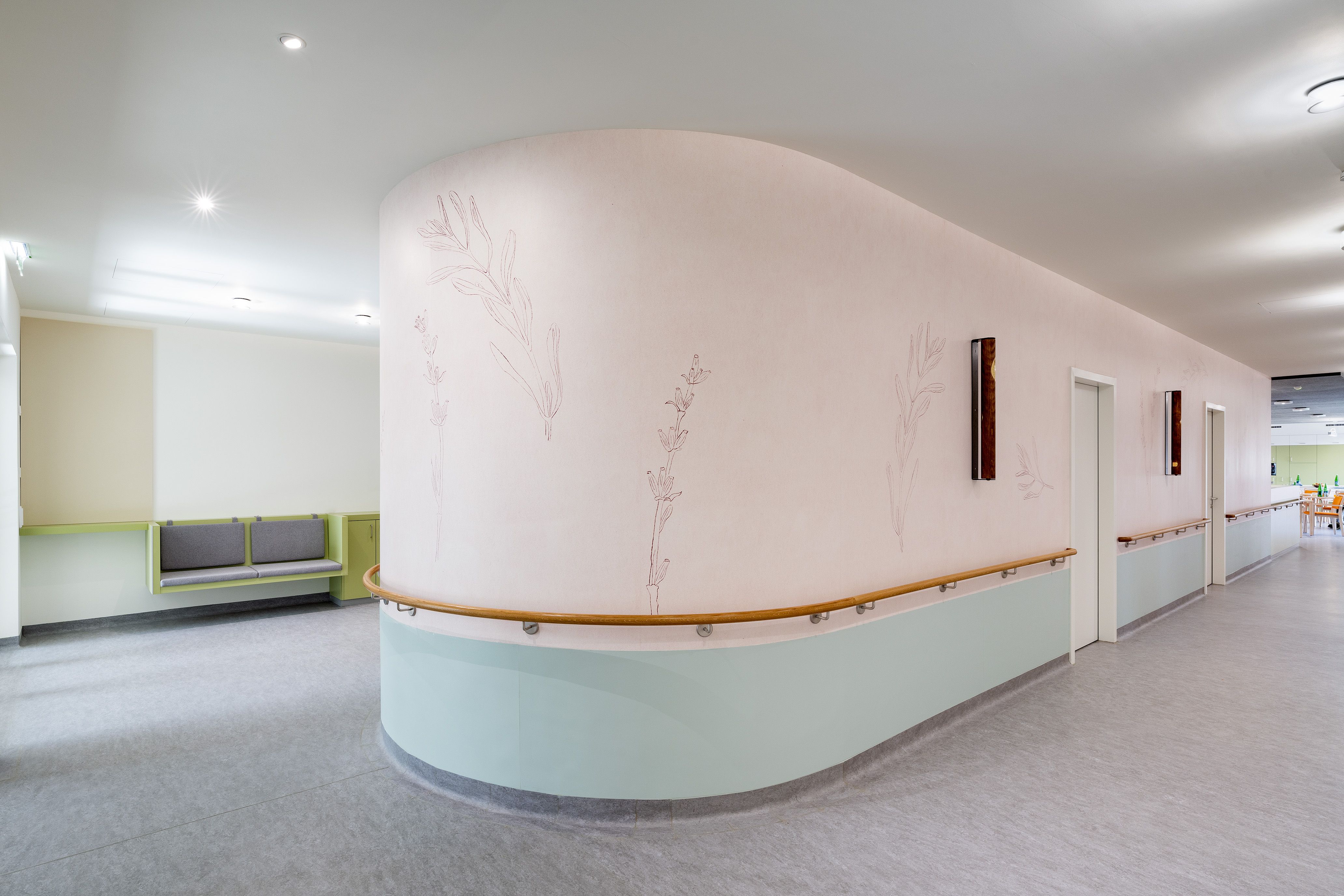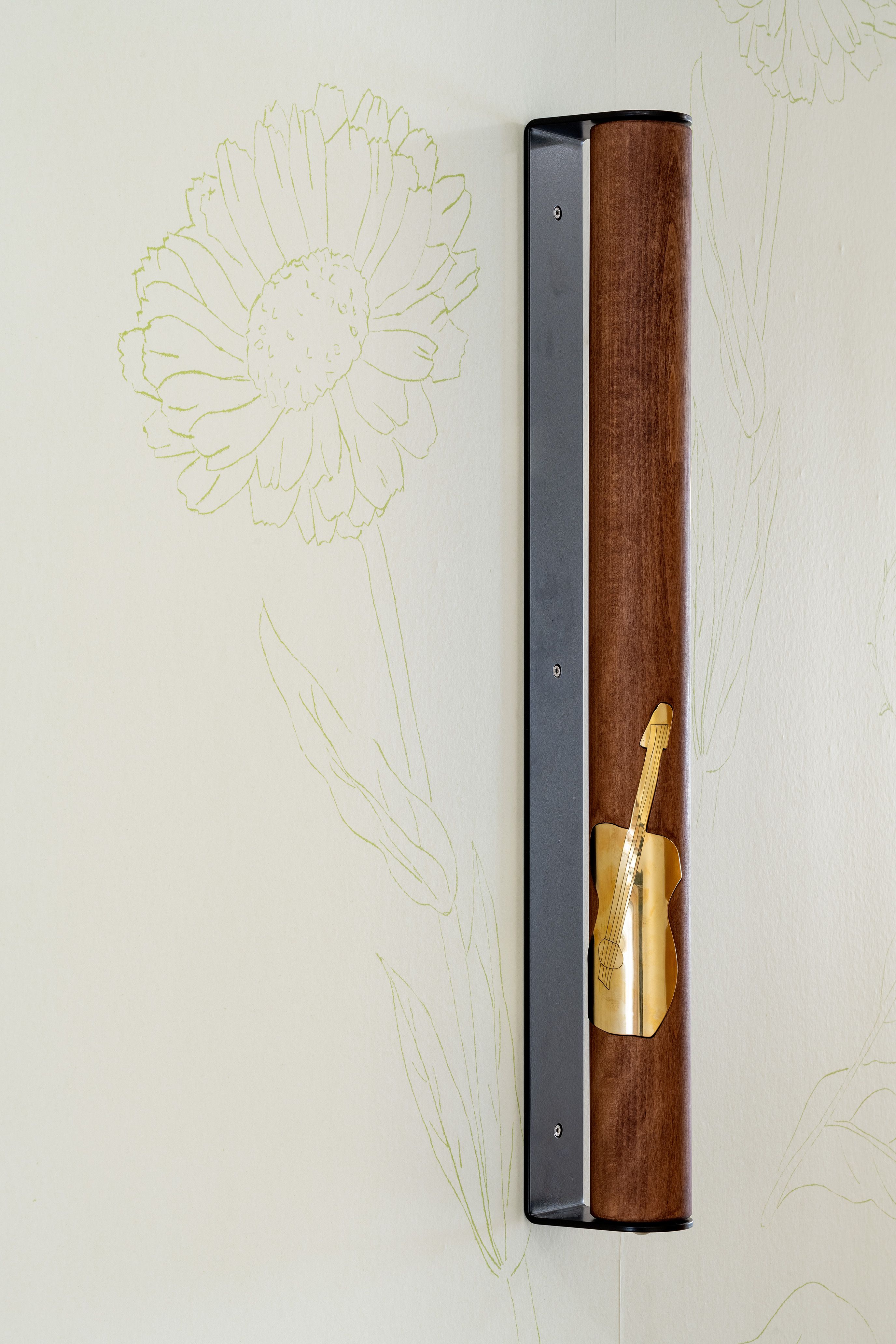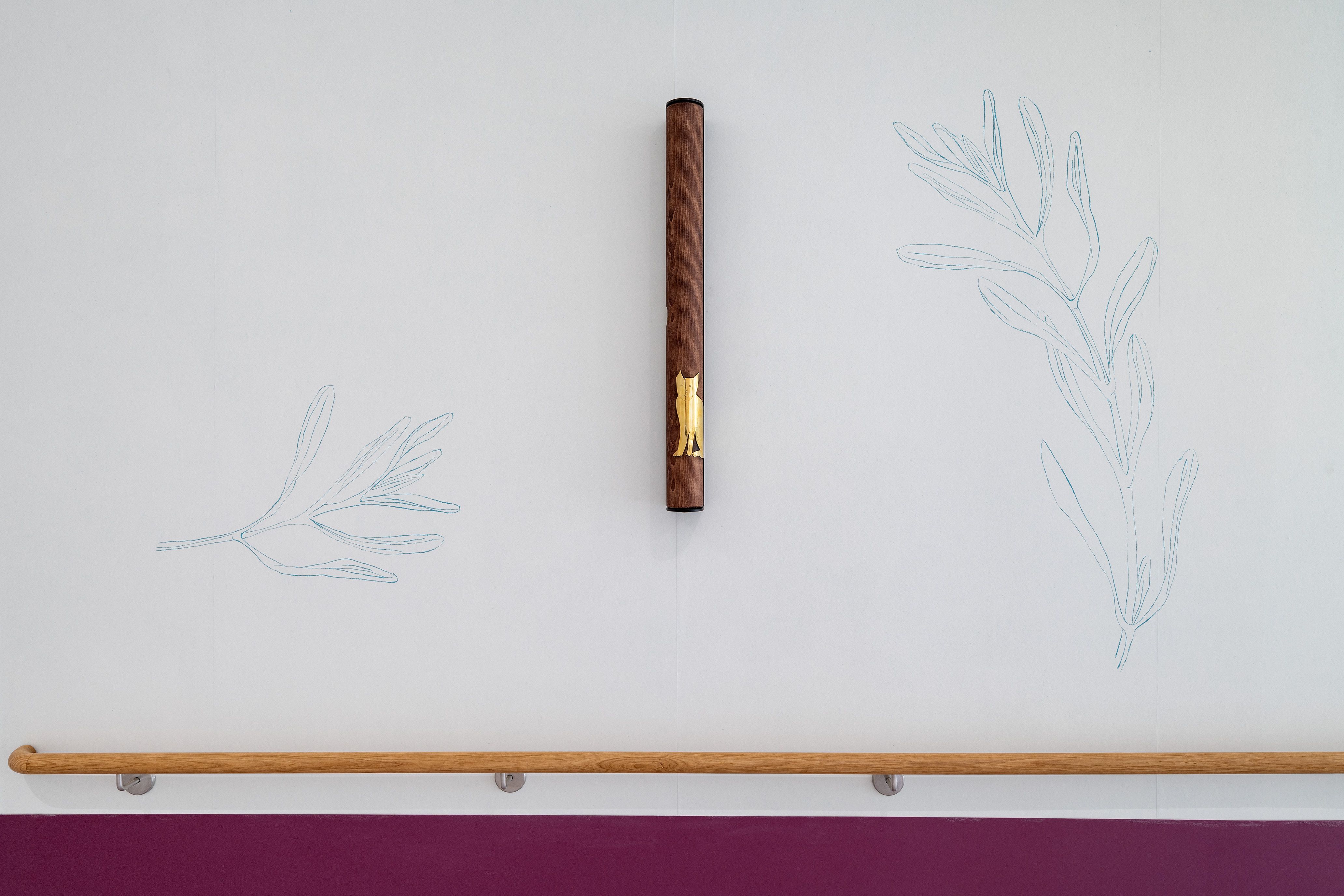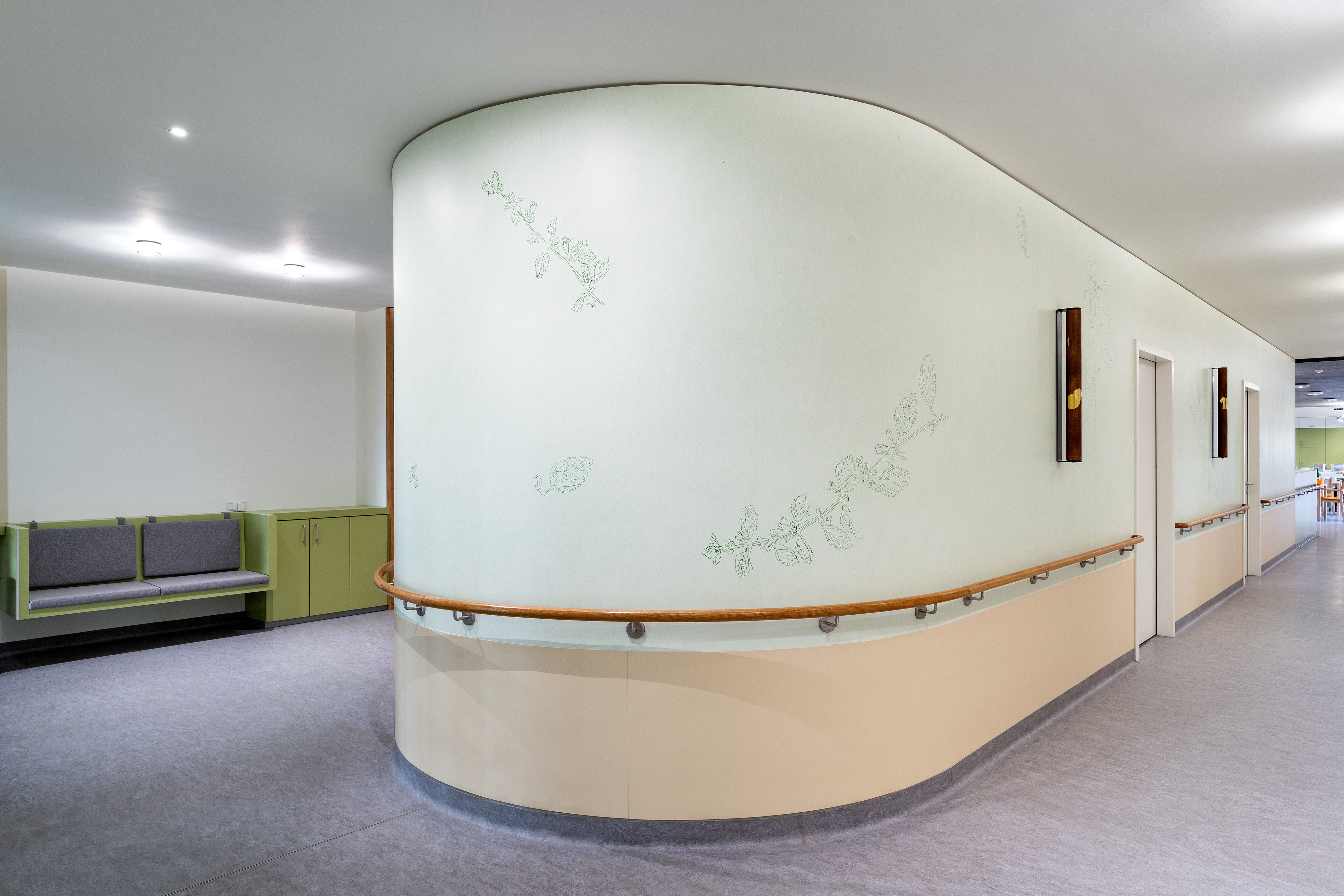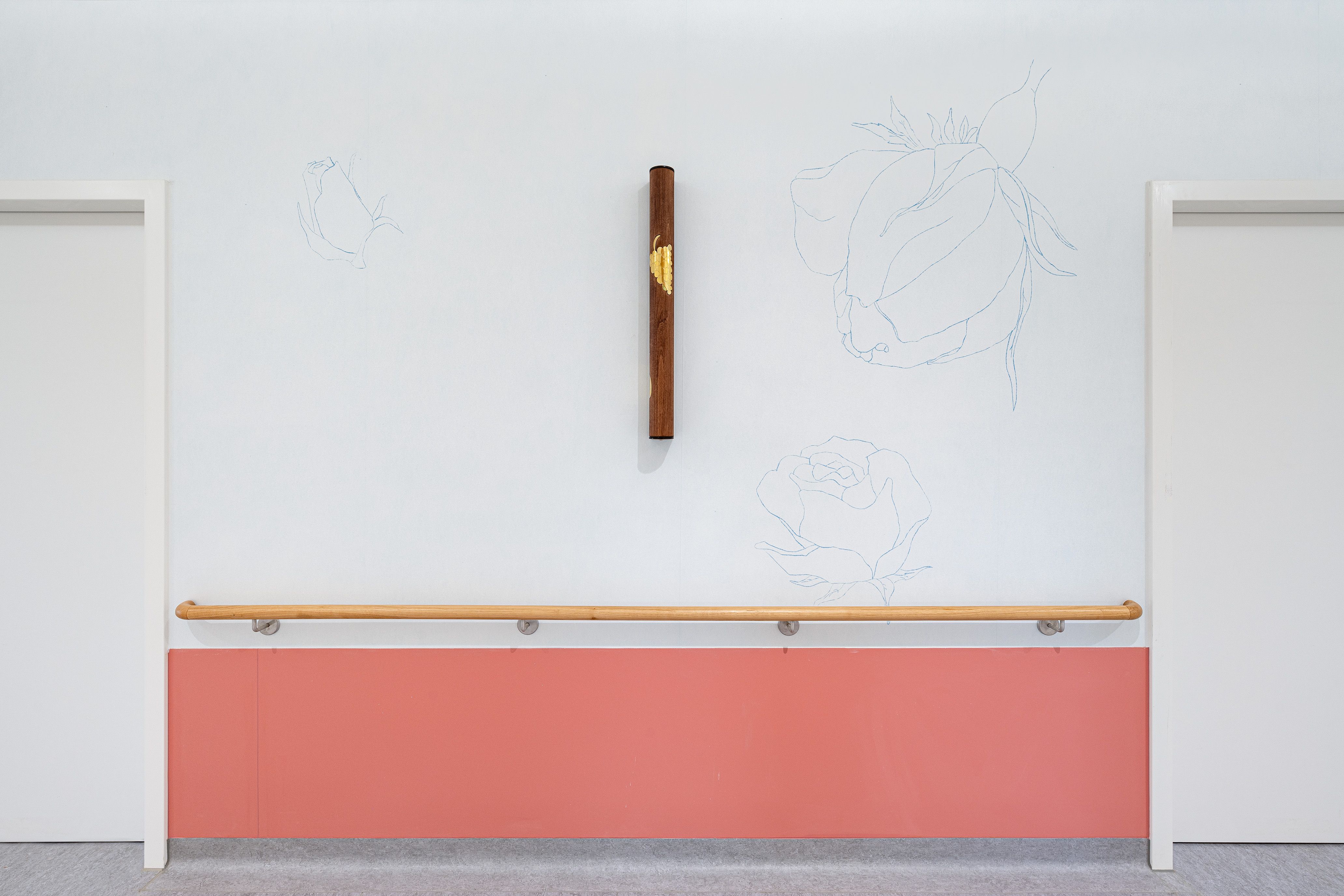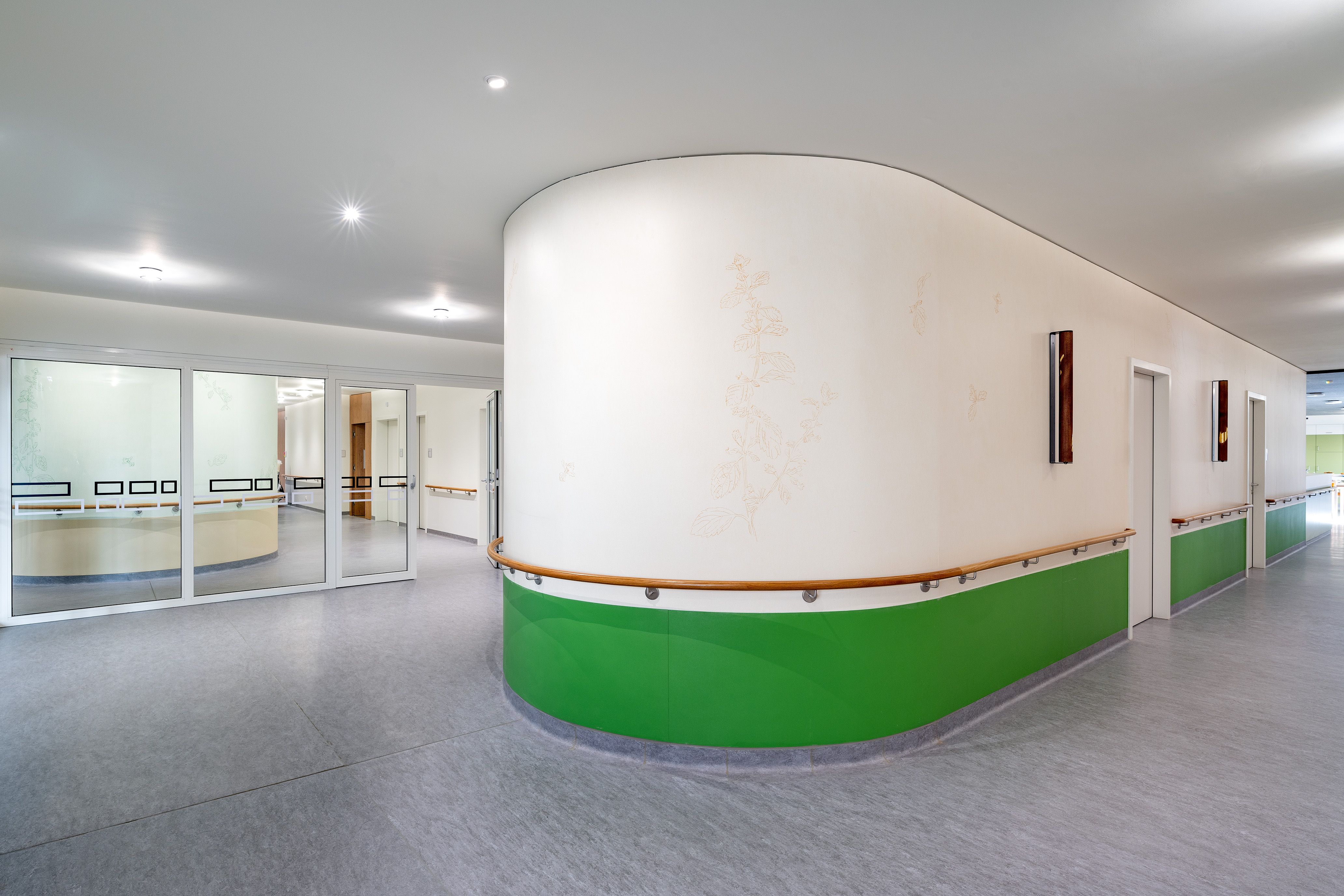Maruša Sagadin
:
Das Blühen spüren (Feel the Blooming)
Back
Information
Maruša Sagadin, Das Blühen spüren (Feel the Blooming)
Wallpaper (in collaboration with Julia Hohenwarter) and prayer wheels for the living quarters of the nursing and care center in Korneuburg
“The past struggles not to drown, and sometimes it manages to stick an arm out of the ocean where it has been sinking for decades. It reaches for the person who has experienced it, because it wants to stay alive.”[1] In her story about her formative experience of meeting punk icon Patti Smith for the first time, the young author Helene Hegemann found this powerful metaphor to describe the elemental power of the past and the life-defining dimension of memory that is essential for survival. This could be the leitmotiv of Maruša Sagadin’s design for the living quarters of the nursing and care center in Korneuburg. In her installation, the artist addresses very similar questions in a playful way: What do our memories say about us? How can past events be made present to resist forgetting? What offers support when people become increasingly disoriented about time and space?
Sagadin’s installation Das Blühen spüren (Feel the Blooming) consists of two elements that complement each other: wallpaper, with drawings of medicinal plants in different colors as a simple system that helps people to find their way around the four residential wings of the center, and wood objects mounted on the papered walls that are reminiscent of prayer wheels and that can be set in motion by hand. The installation has the potential to bring joy and enable residents and their guests to interact with the familiar in a new way.
The medicinal plants, like lemon balm, rose, pot marigold, and lavender, can be found in many gardens around the center. Sagadin does not arrange these plants in a pattern but rather shows them extremely enlarged as being distinctly individual, unique, and full of vitality. The noticeably animated lines of the drawings are the result of a special manual printing technique that the artist Julia Hohenwarter developed in her own practice and realized here. The outlines of the plants were first scratched into paper and then made visible by filling the lines with pigments. Finally, the sheets of paper were transformed into a digital collage and applied as wallpaper. Paradoxically, the imperfections and the traces of damage to the materiality of the lines are what makes these images appear so vibrant and lets them reveal the special beauty of each plant.
Other common objects are depicted on the movable round pieces of wood in the hand wheels: objects of daily use, pets, clothing, fruit, and vegetables. The rollers are easy to handle. When they begin to rotate, the motifs appear and disappear in a metaphor for how life keeps turning and turning—and also for memory as such. In the selection of motifs, which Sagadin did together with managers of the center, it was essential that they evoke numerous associations, while stimulating many different stories. For example, if recognizing a rolling pin brings back memories of a favorite recipe or of baking Christmas cookies a long time ago, or just recently, or if it generally reminds someone of time spent with family and friends, then the hand wheels act as memory machines. According to Sagadin’s intention, they offer people the chance to bring back the moments, events, and experiences of the past, together with the happiness and unhappiness connected with them, and to remember these alone or together with others.
The installation is meant to be touched and used. The participative approach in Sagadin’s works is one of her constitutive artistic strategies, along with other characteristics, like a usually rather eye-catching, cartoon-like language of forms, a feminist fundamental approach, and a play with attributions, discontinuities, and humor. Many of her works, like her series of benches and pedestals with oversized body fragments, are designed to be part of the infrastructures and spaces they address and are only complete when they are in use and interact with various bodies. After all, the artist’s goal is to generate a performative experience and engage in a dialogue with a community through her works.
In the context of the nursing and care center and the special needs of its inhabitants, Sagadin combines the aspect of participation with surfaces that have been designed with nuance. The motifs on the hand wheels have been realized in inlaid brass and can therefore not only be seen; their shapes can also be felt. The difference in materiality between the warm wood and the cold metal encourages a tactile experience, which is often overlooked in our logocentric perception of a world that is focused on seeing. These are qualities that outlast the process of drowning in silence and let people continue to feel life. In this very touching way, Sagadin creates a complex interaction between literally grasping for memories and a deeper understanding of memory and its structure.
Annette Südbeck
[1] Helene Hegemann, Patti Smith (Cologne: Kiepenheuer & Witsch, 202), 83.
Images (9)
